#Amazon web services
Explore tagged Tumblr posts
Text
WordPress Security Services Tailored to Your Business Needs
Atcuality understands that every WordPress website has unique security needs. Our specialized WordPress security services provide customized solutions to safeguard your website from malicious attacks, unauthorized access, and technical vulnerabilities. Whether you own a blog, corporate website, or online store, our comprehensive approach includes malware scanning, vulnerability patching, firewall implementation, and site backups. Atcuality’s team of security professionals works tirelessly to monitor and eliminate threats before they can impact your business. With advanced tools and strategies like SSL encryption and uptime monitoring, we ensure your website operates securely while maintaining peak performance. Cyber threats evolve daily, but with Atcuality, you can stay one step ahead. Don’t let your website become a target—secure your site and maintain customer trust with our proven WordPress security solutions.
#seo marketing#seo services#artificial intelligence#digital marketing#iot applications#seo company#seo agency#amazon web services#azure cloud services#ai powered application#ai applications#ai app development#virtual reality#vr development#vr games#wordpress#web developers#web development#web design#web developing company#website developer near me#wordpress development#web hosting#website#augmented and virtual reality market#augmented human c4 621#augmented intelligence#augmented reality#iot#iotsolutions
4 notes
·
View notes
Text
2. Juli 2024
Mein Backup ist weg, aber wenigstens auf eine preisgünstige Art
Seit ein paar Wochen habe ich eine neue Kreditkarte. Jetzt bekomme ich eine Nachricht, dass 35 Cents durch "AWS EMEA" nicht abgebucht werden konnten, weil die Kreditkartendaten nicht mehr stimmen. Das sagt mir nichts. Eine Suche im Internet ergibt, dass es sich um Amazon Web Services handelt. Das sagt mir immer noch nicht sehr viel. Habe ich die mal benutzt?
Auf gut Glück gebe ich "aws.amazon.com" ein und versuche mich dort mit meiner Mailadresse einzuloggen. Noch bevor ich zur Passwortabfrage vorgedrungen bin, teilt mir die Seite mit, dass ich bitte "Passwort vergessen" wählen und mir ein neues Passwort vergeben soll. Ich klicke auf "Passwort vergessen" und bekomme eine Mail mit einem sehr langen, nicht anklickbaren Link. Ich kopiere den Link in meinen Browser und kann mir dann ein neues Passwort aussuchen. Aber nicht irgendeines, sondern eins mit ... ich ignoriere die Details, öffne meinen Passwortmanager und lasse den ein neues Passwort generieren. Das gebe ich zwei Mal ein. Dann kann ich mich einloggen, bin aber immer noch nicht drin. Erst muss ich meine Mailadresse verifizieren, das heißt, eine weitere Bestätigungsmail abwarten und auf den Link darin klicken. Dann muss ich meine Telefonnummer verifizieren. Dazu bekomme ich einen sechsstelligen Zahlencode und einen automatischen Anruf. Eine nicht ganz menschlich klingende Stimme fordert mich zur Eingabe des Zahlencodes auf. Jetzt kann ich mich einloggen und nachsehen, wofür die 35 Cent abgebucht werden sollten.
Auf dem Handy ist die Ansicht so defekt, dass ich gar nichts herausfinden kann. Ich logge mich auf dem Laptop ein und erfahre, dass ich erst meine Mailadresse ein zweites Mal verifizieren soll. Das kann ich aber auch überspringen und irgendwann in den nächsten 30 Tagen noch erledigen.
Ich zahle offenbar für den "Amazon Simple Storage Service":

Aber was ist drin in dieser Storage? Auf der Seite "Storage" kommt mir nichts bekannt vor.
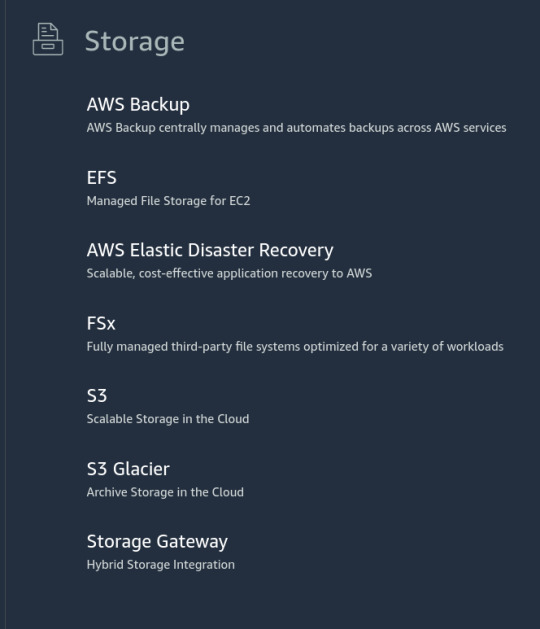
Am ehesten vielleicht S3, denke ich, denn der Rest kommt mir noch unbekannter vor. Unter S3 besitze ich tatsächlich einen "General Purpose Bucket". Das klingt praktisch.
Mein Eimer hat einen langen kryptischen Namen. Darin ist ein Ordner "default". Im Ordner "default" sind viele andere Ordner mit langen kryptischen Namen. Keiner davon enthält irgendwas Verständliches.
Vielleicht kann ich ja herausfinden, seit wann ich diese 35 Cent im Monat bezahle, und den Grund so identifizieren, denke ich. Aber die Übersicht über die Abrechnungen reicht nur ungefähr ein Jahr zurück.
In meinem Passwortmanager hat sich in der Zwischenzeit ein vager Zusammenhang zwischen Amazon AWS und JungleDisk ergeben, einem Cloud-Backup-Ding, das ich in einer sehr grauen Vorzeit einmal benutzt habe. Es ist so lange her, dass es das Techniktagebuch noch nicht gab, weshalb ich nirgends nachlesen kann, was ich eigentlich damit gemacht habe. JungleDisk ist inzwischen verkauft oder umbenannt worden. Die Seite www.myjungledisk.com weigert sich, mich zu erkennen.
Ich sehe in meinen Mails nach. Offenbar habe ich mich bei JungleDisk 2010 angemeldet und 2017 mal eine Nachricht über Änderungen bekommen. Diese Nachricht enthält einen anderen Link, unter dem ich mich auch wirklich einloggen kann.
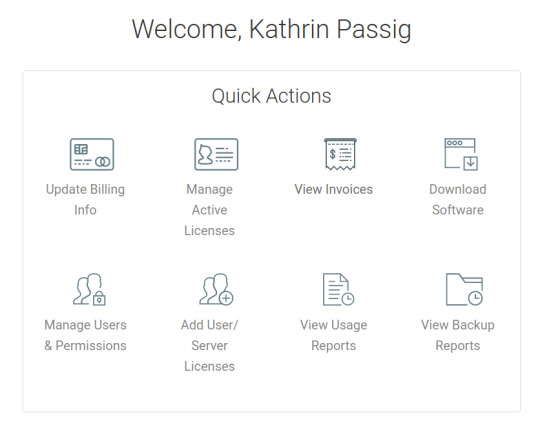
Der Menüpunkt "Online Disks" sieht vielversprechend aus.
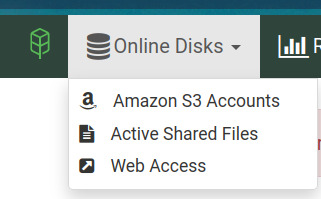
Aber alle Punkte führen nur zu der Aufforderung, mir einen Amazon S3 Account zuzulegen (habe ich doch schon) oder den Support zu kontaktieren (will ich nicht).
Keine Ahnung, was in diesem Backup drin war und ob es sich um einzigartige, wertvolle, unwiederbringliche Daten handelt. Schon für das Techniktagebuch würde ich eigentlich gern weiterforschen, aber alle weiteren Schritte wirken noch viel verwickelter als die bisherigen und ich werde schon beim Drübernachdenken ganz lustlos. Ich glaube, ich lasse alles so, wie es jetzt ist. Irgendwann wird wegen der nicht bezahlten 35 Cent irgendwas gekündigt werden, und dann werde ich auf das unbekannte Backup noch weniger zugreifen können als jetzt schon.
(Kathrin Passig)
11 notes
·
View notes
Text
Amazon execs doubt Microsoft's quantum computing breakthrough
In This Story Final month, Microsoft (MSFT-1.51%) introduced that it created a brand new state of matter for its first quantum computing chip — a declare that Amazon (AMZN-1.15%) is reportedly not offered on. Trump freezes his 25% tariffs on Mexican imports for one month The identical day that Microsoft unveiled its Majorana 1 quantum computing chip, Amazon’s head of quantum applied sciences,…
#amazon#Amazon Web Services#Andy Jassy#Business#defense advanced research projects agency#Draft:Topoconductor#Finance#Google#IBM#Internet#Majorana#Majorana 1#Majorana 1 quantum computing chip#Matt Garman#Microsoft#Microsoft Azure Quantum#Oskar Painter#Physical and logical qubits#Quantum computing#Quartz#Satya Nadella#Simone Severini#Technology#Topological quantum computer
2 notes
·
View notes
Text

The story of a 13-year-old Nigerian programmer, Joshua Agboola, who just emerged as the youngest Certified Amazon Web Services (AWS) Developer Associate in Africa, should gladden the hearts of most patriotic Nigerians.
This achievement reminds us of the immeasurable roles that education plays in the life of every child. His success story should also inspire our youths to strive hard to develop their skills and seek to always become better in their fields through continuous learning and improvement.
There is far more honour in the success achieved by utilising talents positively. If leadership inspires hope through competence and transparency with productivity as key goals, our leaders of tomorrow will be directed towards making positive use of their talents instead of diverting efforts to criminality. Moreover, the recent strides of our youths in the areas of Information Technology indicate that we as a people are ready to partake in the benefits of modern technology.
Dear Joshua, I celebrate you today for your outstanding achievement. You have made a name for yourself and our nation. I urge you to remain focused on building a great future for yourself and a better society for all.
#agboola#amazon web services#african#afrakan#kemetic dreams#brownskin#afrakans#africans#brown skin#nigerian#nigerians
40 notes
·
View notes
Text
PeopleSoft Cedar Consulting: Revolutionizing Enterprise Solutions with Expertise and Innovation
In the world of enterprise software solutions, PeopleSoft remains a key player, providing organizations with robust tools for managing human resources, finances, supply chains, and more. However, to fully harness the power of PeopleSoft and tailor it to a company's unique needs, businesses often turn to specialized consulting services. One such provider making waves in this space is Cedar Consulting, a firm that offers top-tier expertise in PeopleSoft and helps organizations optimize their use of this powerful software suite.
Understanding PeopleSoft: A Quick Overview
PeopleSoft, originally developed by PeopleSoft Inc., is a comprehensive suite of applications that help businesses manage a variety of operations, from human resource management to financials, supply chain management, and customer relationship management. PeopleSoft has evolved over time, being acquired by Oracle in 2005, but it remains one of the most widely used ERP (Enterprise Resource Planning) solutions worldwide.
Organizations across various sectors continue to rely on PeopleSoft for its scalability, flexibility, and advanced features. However, to ensure that the platform is implemented effectively and aligns with specific business goals, PeopleSoft consulting has become a critical component for success.
What Makes Cedar Consulting Stand Out?
Comprehensive PeopleSoft Services Cedar Consulting offers a wide range of services centered around PeopleSoft, including:
Implementations: Cedar assists organizations in smoothly deploying PeopleSoft applications, ensuring that the systems are configured to meet specific organizational requirements.
Upgrades: As PeopleSoft continually evolves, businesses need to stay up to date with the latest versions and features. Cedar provides seamless upgrade services to help clients transition to newer versions without disrupting business operations.
Customization and Configuration: Cedar���s experts understand that each business has unique needs. They customize PeopleSoft applications to ensure they work optimally for individual clients, improving functionality and integration with other systems.
Support and Optimization: Cedar’s consultants offer ongoing support to help businesses maximize their PeopleSoft investments, addressing issues as they arise and optimizing system performance over time.
Integration: PeopleSoft often needs to integrate with other enterprise systems. Cedar provides integration services to ensure smooth data flow and seamless operations across different software platforms.
Expert Knowledge and Experience Cedar Consulting distinguishes itself through its team of professionals with extensive PeopleSoft experience. Whether it's implementing new PeopleSoft modules, upgrading existing systems, or troubleshooting complex technical issues, Cedar’s consultants bring a wealth of expertise to the table. This deep knowledge ensures that clients receive not only a working solution but one that is efficient, scalable, and cost-effective.
Tailored Solutions One of Cedar Consulting's core strengths is its ability to provide customized solutions. They take the time to understand the unique challenges faced by each client and design strategies that align with specific business objectives. Cedar is particularly adept at making complex PeopleSoft systems more user-friendly and efficient, helping businesses achieve their full potential.
Proven Track Record of Success Cedar Consulting has built a reputation for delivering results. Their success stories span a wide range of industries, from higher education and healthcare to financial services and government. Organizations trust Cedar for their proven ability to optimize and enhance PeopleSoft systems, driving both operational efficiency and strategic growth.
Focus on Long-Term Relationships Cedar Consulting is not just about implementing a system and walking away. Their approach centers on building long-term relationships with clients. They provide ongoing support and consulting, ensuring that PeopleSoft systems continue to meet the evolving needs of the business. This commitment to customer success is what makes Cedar a preferred consulting partner for many organizations.
Benefits of Partnering with Cedar Consulting for PeopleSoft Solutions
Enhanced Efficiency and Productivity Cedar’s deep expertise ensures that businesses get the most out of their PeopleSoft systems, helping streamline workflows and improve productivity. Whether it’s simplifying user interfaces or automating routine tasks, Cedar’s solutions enable organizations to operate more efficiently.
Reduced Costs By optimizing the existing PeopleSoft system, Cedar helps businesses reduce operational costs. Moreover, their experience with system upgrades and integrations ensures that businesses avoid costly mistakes and delays in deployment.
Scalability and Flexibility Cedar Consulting’s solutions are designed to scale with the organization as it grows. Their custom solutions ensure that businesses can add new functionalities or integrate with new systems as needed, without requiring major overhauls.
Improved Decision-Making Cedar’s data-driven approach helps organizations leverage PeopleSoft’s robust reporting and analytics features. By improving access to critical data, businesses can make more informed decisions, whether it’s about financial planning, human resources, or supply chain management.
Ongoing Support Cedar Consulting provides continuous support to its clients, ensuring that their PeopleSoft systems stay up to date, secure, and effective over time. This proactive support helps organizations avoid costly downtime and disruptions.
Conclusion
As businesses continue to navigate the complexities of modern enterprise operations, the need for specialized PeopleSoft consulting services becomes ever more apparent. Cedar Consulting has established itself as a trusted partner for organizations seeking to unlock the full potential of their PeopleSoft systems. With a focus on tailored solutions, expert knowledge, and long-term customer success, Cedar Consulting stands out as a leader in the PeopleSoft consulting space, driving operational efficiency and delivering lasting value for clients.
#amazon web services#amazon sierra#oracle cloud consulting#aws cloud consultant#oracle consulting services#oracle public sector cloud#managed cloud services#oracle consulting#peoplesoft aws hosting#top oracle implementation partners
2 notes
·
View notes
Text
Can Amazon Sustain Its Dominance in the E-commerce Sector?

Amazon has taken its place amongst the world’s major Internet-based corporations. A platform that has attracted millions of its user across the globe and one that has revolutionalized our ability to shop. It provides a fast shipping service, a rather vast product portfolio, and concentrates on its customer base. However, the question that arises is that: As more and more competitors appear in the near future, can Amazon continue to dominate the market? As such, more people are asking whether the company can maintain its superiority. By this, it means that for Amazon to remain dominant it must be able to come up with strategies that counters the ever evolving trends. This fact is confirmed by examples from the past, according to which the position on top is never certain.
Growing Competition
Indeed, the level of competition on Amazon is increasing. Retail giants like Walmart, Alibaba and e-commerce enablers like Shopify are pushing hard. They are enhancing their platforms, the platforms are becoming better for the customer. New competitors are only a click away and Walmart has recently initiated fast and cheaper shipping like Amazon. Through shopify, small business are being aided on how to operate online. These competitors are not just competing directly with Amazon as was the case a few years back. But the slice is getting thinner and even new platforms like IGTV and Instagram Shopping are dragging users away. Thus, the key competitors — big retail stores and merchants — are trying to edge Amazon by concentrating on their advantages, namely, individual approach and specialisation.
The Future of E-commerce
However, we also have primary strengths for Amazon as follows: Logistics infrastructure which the company has established is almost unchangeable. The fact is that people still come to Amazon Prime in millions. In newer tactics of delivery like drone delivery, the cashier-less stores they are preparing the future of the retail business. Basically, Amazon cannot wane or pause at this time and you will read why in the subsequent sections of this discourse. Listening to customers remains one of the most critical activities the company has to undertake. If it fails to adapt, customers can always switch to other brands that preference green in their products. This outlet of business is dynamic, and Amazon needs to adapt for it to keep on being the market giant it is. That makes the question, can Amazon maintain its position at the top of the online retail food pyramid? In any case, it is a good niche player, at least for now, though only time will tell.
It is our observation at Amazon that the game is never won; it has to be played over and over again. Only a few years down the road the success of this company will only be determined by how it is going to manage competition and which market trends it is going to embrace.
Discover businessdirectory: Your Comprehensive Source for USA Contact Information
For in-depth access to extensive USA contact details, explore the businessdirectory directory. Offering a wide array of listings, this resource ensures you can find specific contacts across various industries and regions within the United States. Whether you’re searching for business contacts, customer service numbers, or professional connections, businessdirectory is a dependable platform to streamline your search. Utilize its user friendly interface and vast database to access the most relevant and current contact information tailored to your needs. Efficiently uncover detailed American business contact information with the businessdirectory directory today.
#amazon#amazon web services#amazon seller#business directory#usa business#usa business directory#ecommerce#amazon selling tips
4 notes
·
View notes
Text
A very helpful platform for Amazon sellers to improve keyword rankings and optimize product pages. Interested friends can log in to learn more
3 notes
·
View notes
Text
2 notes
·
View notes
Text
95/366
07 April 2024
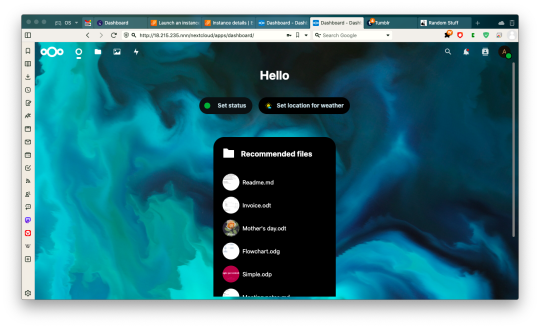
Setelah kemarin coba pake Google Cloud Platform dengan segala kemudahan sat setnya. kini mencoba pake Amazon Web Services (AWS) dengan segala pengaturan yang njlentreh apa aja ada.
Pake yang Free tier, dengan speed yang 'disesuaikan' cukup laah untuk bangun nextcloud di EC2.
Mari coba running, paling tidak untuk beberapa jam kedepan.
[update]

Setelah beberapa jam di 'panjer'. ada beberapa case yang belum resolve, yakni masalah bad gateway dan ini..
4 notes
·
View notes
Text

Well honestly what the heck? Amazon.
#brain juice raw#its kinda funny tho#amazon web services#bit crushed#this is like the ultimate jpeg compression
3 notes
·
View notes
Text
Immersive Learning: The Power of VR in Training - Atcuality
At Atcuality, we believe that learning should be as dynamic as the challenges you face. That’s why our VR-based training solutions are transforming how individuals and teams acquire new skills. With VR, we simulate real-life environments, enabling learners to practice, adapt, and succeed without the consequences of real-world mistakes. Our solutions are cost-effective, scalable, and highly engaging, making them ideal for industries like healthcare, construction, and corporate training. Experience the unmatched advantages of immersive technology and give your team the tools they need to excel. Step into the future of education with Atcuality.

#seo services#seo marketing#artificial intelligence#seo company#seo agency#ai powered application#digital marketing#azure cloud services#iot applications#amazon web services#augmented human c4 621#augmented reality agency#augmented and virtual reality market#augmented intelligence#augmented reality#ai applications#ai app development#ai generated#technology#virtual reality#digital services#web development#web design#web developers#web developing company#website development#cash collection application#blockchain#metaverse#wordpress
3 notes
·
View notes
Text
The New Era of Digital Transformation in Business

In today's digital age, businesses are experiencing a profound transformation that goes beyond mere technological advancements. Digital transformation has become a crucial shift that is reshaping how companies operate and deliver value to their customers. In this article, we will explore the various aspects of this new era of digital transformation and understand how it is revolutionizing business practices. From the influence of artificial intelligence to the impact of the Internet of Things, we will unveil the intricacies and possibilities that this era brings.
Introduction: Embracing the Digital Age We find ourselves in an era where every industry is undergoing significant changes due to the rapid advancements in technology. To stay relevant and competitive, businesses must adapt to this digital landscape. But what exactly is digital transformation, and how is it reshaping the business world? Let's begin by defining this concept.
Defining Digital Transformation Digital transformation is more than just technology adoption; it involves a fundamental change in how businesses function and provide value to their customers. It is a strategic shift that leverages the power of technology to enhance processes, improve customer experiences, and drive innovation.
The Historical Evolution To grasp the new era of digital transformation, we must first understand its historical evolution. We have come a long way since the early days of the internet and witnessed the integration of digital solutions in our lives.
Key Drivers of Digital Transformation Digital transformation is propelled by several factors, including changing customer expectations, globalization, and the need for agility. We will delve into these key drivers and explore their impact on businesses.
The Role of Data and Analytics Data forms the foundation of digital transformation. We will explore how businesses utilize data and analytics to make informed decisions, optimize operations, and gain a competitive edge.
Transformative Technologies: AI and ML Artificial intelligence and machine learning are at the forefront of digital transformation. We will uncover how these technologies are reshaping industries and offering new possibilities.
IoT's Impact on Business The Internet of Things (IoT) is connecting devices and revolutionizing industries. We will discuss how IoT is transforming businesses, from manufacturing to healthcare.
Cloud Computing: A Game Changer Cloud computing has become a cornerstone of digital transformation. We will explore its benefits, such as scalability and cost-efficiency, and how it is reshaping the IT landscape.
Cybersecurity in the Digital Age With increased digitalization comes increased cyber threats. We will emphasize the importance of cybersecurity in protecting businesses and customer data in the digital age.
Digital Transformation in Marketing Marketing has undergone a significant shift due to digital transformation. We will discuss the strategies and tools that businesses employ to reach their audience in innovative ways.
Enhancing Customer Experience Digital transformation is all about elevating customer experiences. We will explore how businesses use technology to create personalized and seamless interactions.
The Future of Work The way we work is evolving, with remote work and automation becoming the new norm. We will examine how the future of work is being shaped by digital transformation.
Challenges and Risks While digital transformation offers numerous benefits, it also presents challenges and risks. We will address common obstacles that businesses face on their transformation journey.
Success Stories Let's take a look at inspiring success stories of businesses that have embraced digital transformation and reaped the rewards.
The Road Ahead: What to Expect What does the future hold for digital transformation? We will conclude by discussing the trends and innovations that we can anticipate in the coming years.
Conclusion The new era of digital transformation in business promises an exciting journey into uncharted territory. It is a world where technology acts as a catalyst for innovation, efficiency, and improved customer experiences. As businesses continue to adapt and embrace the digital age, the possibilities are endless.
FAQs
What is the primary goal of digital transformation in business?
The primary goal of digital transformation is to fundamentally change how a business operates by leveraging technology to enhance processes, improve customer experiences, and drive innovation.
How does data and analytics play a crucial role in digital transformation?
Data and analytics play a crucial role in digital transformation by providing valuable insights that enable businesses to make informed decisions, optimize operations, and gain a competitive edge.
What are the key drivers of digital transformation?
Key drivers of digital transformation include changing customer expectations, globalization, the need for agility, and advancements in technology.
How does the Internet of Things (IoT) impact various industries?
The Internet of Things (IoT) impacts various industries by connecting devices and enabling real-time data collection and automation. This leads to increased efficiency and opens up new opportunities.
What are some common challenges in digital transformation, and how can businesses address them?
Common challenges in digital transformation include resistance to change, cybersecurity risks, and the need for skill development. Businesses can address these challenges through proper planning, training, and robust security measures.
2 notes
·
View notes
Text
youtube
#Firewall#AWS WAF#AWS Web Application Firewall#WAF#Web Application Firewall#AWS#Amazon#Amazon Web Services#Youtube
2 notes
·
View notes
Text
Que a Amazon Está Quebrando!
O maior erro da Amazon, é por isso que a Amazon está quebrando! Em 1995, muito poucas pessoas poderiam prever que a pequena livraria online de Jeff Bezos um dia se tornaria um gigante de US$1,7 trilhões que vende de tudo. De fraldas a sofás, produz filmes, possui uma rede de supermercados e fornece serviços de computação em nuvem para empresas em todo o mundo. No entanto, este gigante do varejo está enfrentando vários problemas. De fato, o preço das ações da Amazon caíram, assim como os seus ganhos, por causa da epidemia. E agora está sendo negociado no nível em que estava antes do Covid-19, que marca bilhões de dólares em perdas.
#a Amazon está quebrando#amazon#amazon prime#amazon stock#amazon stock analysis#amazon stock prediction#Amazon Web Services#amzn#amzn stock#amzn stock analysis#Andy Jassy#Best Buy#Bill Gates#brandstory#business#business ideas#business stories#businessstory#Comitê Judiciário da Câmara#como a Amazon trata os funcionários#Elon Musk#elon musk brasil#empreendedorismo#entrepreneurship#Facebook#future of amazon#gigante do varejo#itens que usam a marca Amazon#Jeff Bezos#lucro da Amazon
2 notes
·
View notes
Text
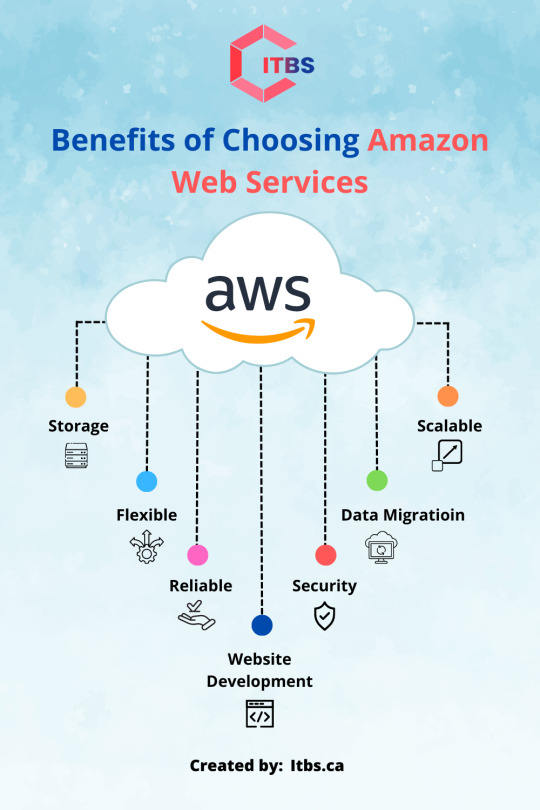
Amazon Web Services Advantages
The excellent option is Amazon Web Services (AWS). Amazon Web Services (AWS) is a fantastic option if you're searching for a dependable, secure, and effective cloud platform to host your business apps. One of the most widely used cloud computing platforms, AWS, has a number of benefits. We discussed AWS's many advantages in this image, along with the reasons why it is the ideal cloud computing platform.
1 note
·
View note
Text
China's MCP adoption: AI assistants that actually do things
New Post has been published on https://thedigitalinsider.com/chinas-mcp-adoption-ai-assistants-that-actually-do-things/
China's MCP adoption: AI assistants that actually do things
China’s tech companies will drive adoption of the MCP (Model Context Protocol) standard that transforms AI assistants from simple chatbots into powerful digital helpers.
MCP works like a universal connector that lets AI assistants interact directly with favourite apps and services – enabling them to make payments, book appointments, check maps, and access information on different platforms on users’ behalves.
As reported by the South China Morning Post, companies like Ant Group, Alibaba Cloud, and Baidu are deploying MCP-based services and positioning AI agents as the next step, after chatbots and large language models. But will China’s MCP adoption truly transform the AI landscape, or is it simply another step in the technology’s evolution?
Why China’s MCP adoption matters for AI’s evolution
The Model Context Protocol was initially introduced by Anthropic in November 2024, at the time described as a standard that connects AI agents “to the systems where data lives, including content repositories, business tools and development environments.”
MCP serves as what Ant Group calls a “USB-C port for AI applications” – a universal connector allowing AI agents to integrate with multiple systems.
The standardisation is particularly significant for AI agents like Butterfly Effect’s Manus, which are designed to autonomously perform tasks by creating plans consisting of specific subtasks using available resources.
Unlike traditional chatbots that just respond to queries, AI agents can actively interact with different systems, collect feedback, and incorporate that feedback into new actions.
Chinese tech giants lead the MCP movement
China’s MCP adoption by tech leaders highlights the importance placed on AI agents as the next evolution in artificial intelligence:
Ant Group, Alibaba’s fintech affiliate, has unveiled its “MCP server for payment services,” that lets AI agents connect with Alipay’s payment platform. The integration allows users to “easily make payments, check payment statuses and initiate refunds using simple natural language commands,” according to Ant Group’s statement.
Additionally, Ant Group’s AI agent development platform, Tbox, now supports deployment of more than 30 MCP services currently on the market, including those for Alipay, Amap Maps, Google MCP, and Amazon Web Services’ knowledge base retrieval server.
Alibaba Cloud launched an MCP marketplace through its AI model hosting platform ModelScope, offering more than 1,000 services connecting to mapping tools, office collaboration platforms, online storage services, and various Google services.
Baidu, China’s leading search and AI company, has indicated that its support for MCP would foster “abundant use cases for [AI] applications and solutions.”
Beyond chatbots: Why AI agents represent the next frontier
China’s MCP adoption signals a shift in focus from large language models and chatbots to more capable AI agents. As Red Xiao Hong, founder and CEO of Butterfly Effect, described, an AI agent is “more like a human being” compared to how chatbots perform.
The agents not only respond to questions but “interact with the environment, collect feedback and use the feedback as a new prompt.” This distinction is held to be important by companies driving progress in AI.
While chatbots and LLMs can generate text and respond to queries, AI agents can take actions on multiple platforms and services. They represent an advance from the limited capabilities of conventional AI applications toward autonomous systems capable of completing more complex tasks with less human intervention.
The rapid embrace of MCP by Chinese tech companies suggests they view AI agents as a new avenue for innovation and commercial opportunity that go beyond what’s possible with existing chatbots and language models.
China’s MCP adoption could position its tech companies at the forefront of practical AI implementation. By creating standardised ways for AI agents to interact with services, Chinese companies are building ecosystems where AI could deliver more comprehensive experiences.
Challenges and considerations of China’s MCP adoption
Despite the developments in China’s MCP adoption, several factors may influence the standard’s longer-term impact:
International standards competition. While Chinese tech companies are racing to implement MCP, its global success depends on widespread adoption. Originally developed by Anthropic, the protocol faces potential competition from alternative standards that might emerge from other major AI players like OpenAI, Google, or Microsoft.
Regulatory environments. As AI agents gain more autonomy in performing tasks, especially those involving payments and sensitive user data, regulatory scrutiny will inevitably increase. China’s regulatory landscape for AI is still evolving, and how authorities respond to these advancements will significantly impact MCP’s trajectory.
Security and privacy. The integration of AI agents with multiple systems via MCP creates new potential vulnerabilities. Ensuring robust security measures across all connected platforms will be important for maintaining user trust.
Technical integration challenges. While the concept of universal connectivity is appealing, achieving integration across diverse systems with varying architectures, data structures, and security protocols presents significant technical challenges.
The outlook for China’s AI ecosystem
China’s MCP adoption represents a strategic bet on AI agents as the next evolution in artificial intelligence. If successful, it could accelerate the practical implementation of AI in everyday applications, potentially transforming how users interact with digital services.
As Red Xiao Hong noted, AI agents are designed to interact with their environment in ways that more closely resemble human behaviour than traditional AI applications. The capacity for interaction and adaptation could be what finally bridges the gap between narrow AI tools and the more generalised assistants that tech companies have long promised.
See also: Manus AI agent: breakthrough in China’s agentic AI
Want to learn more about AI and big data from industry leaders? Check out AI & Big Data Expo taking place in Amsterdam, California, and London. The comprehensive event is co-located with other leading events including Intelligent Automation Conference, BlockX, Digital Transformation Week, and Cyber Security & Cloud Expo.
Explore other upcoming enterprise technology events and webinars powered by TechForge here.
#000#2024#adoption#affiliate#agent#Agentic AI#agents#ai#ai & big data expo#ai agent#AI AGENTS#ai model#ai tools#Alibaba#alibaba cloud#Amazon#Amazon Web Services#amp#anthropic#applications#apps#artificial#Artificial Intelligence#assistants#automation#autonomous#autonomous systems#baidu#Big Data#book
0 notes